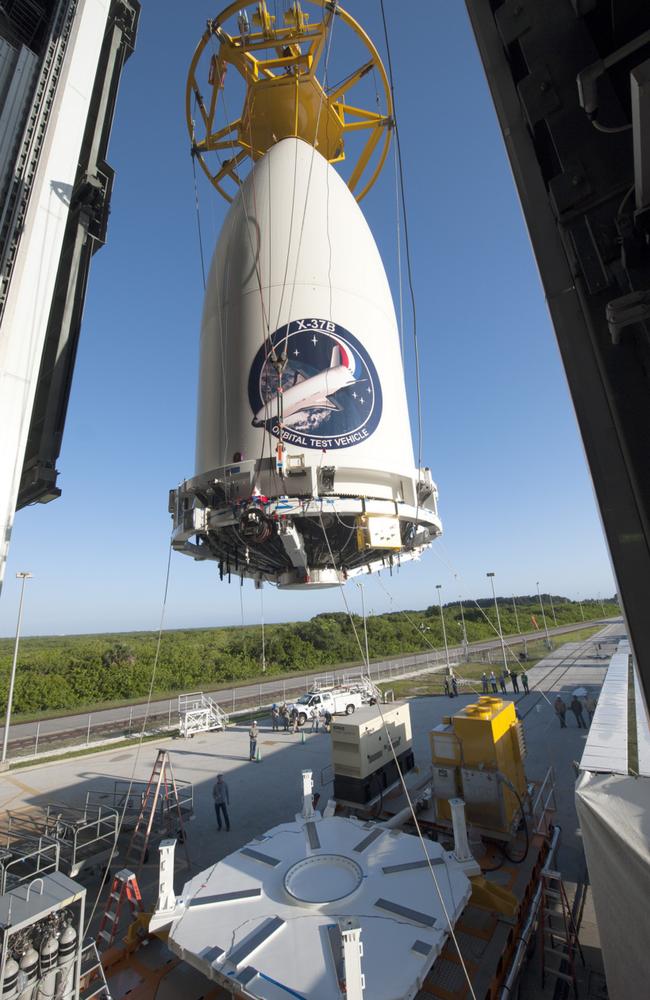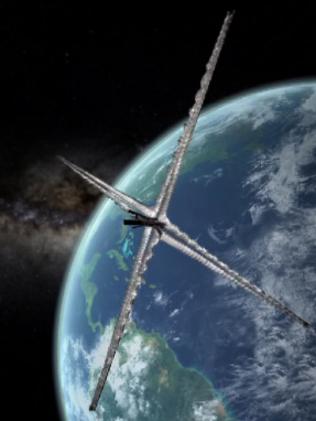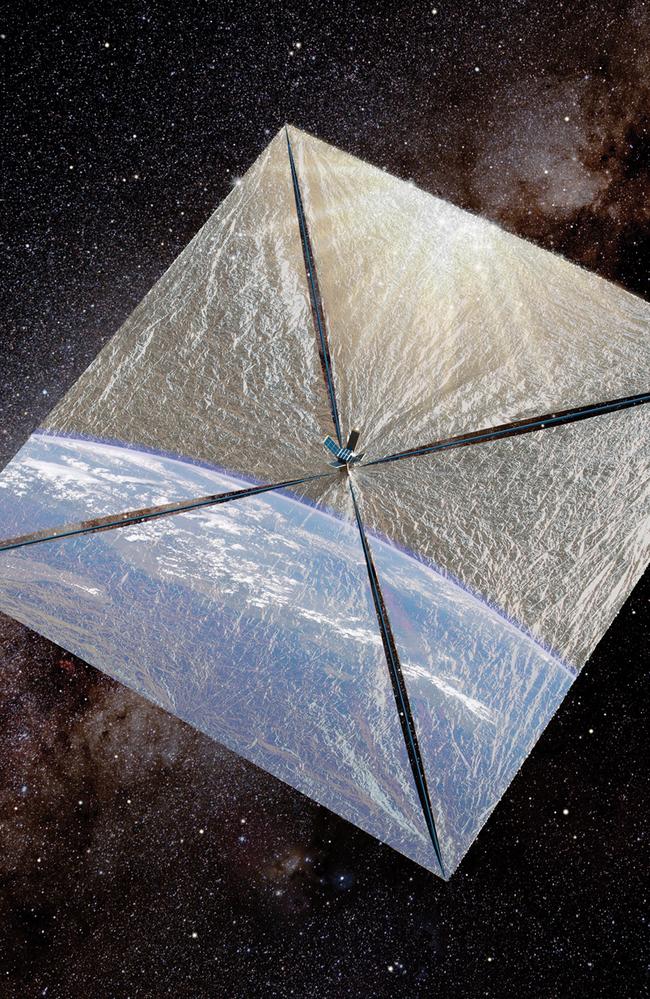Experimental light sail to test cheap, light space propulsion technique
COULD travelling to nearby stars be as simple as hoisting a sail? An experimental spacecraft is about to find out.
COULD travelling to nearby stars be as simple as hoisting a sail? An experimental spacecraft is about to find out.
It’s an ancient idea: Unfurling a sheet of lightweight material to catch a wind and propel a craft.
In this case the ‘wind’ is the outpouring of radiation from the sun and the ‘sail’ a 32 square metre lightweight sheet of reflective mylar.
In space terms, it’s not that young either: The idea has been around in science and science fiction since the 1950s.
Then & Now: In 1976 Carl Sagan shared solar sailing on The Tonight Show. 40 yrs later #LightSail's finally happening https://t.co/X4HlX7DPVD
— Planetary Society (@exploreplanets) May 6, 2015Now, a series of solar sails is about to be launched to test the viability of the idea.
The project’s original May 6 launch date has been delayed because of problems with the main US Air Force cargo riding the same booster rocket.
It’s the X-37B reusable spaceplane — an ultra-secret robotic craft that is capable of staying in space for years at a time.
Now, the first of two experimental light-sail craft is expected to be sent into orbit on May 20.

‘A TALL SHIP AND A STAR TO SAIL BY …’
The privately funded project aims to demonstrate solar sailing as a cheap, low-tech and reliable means of space propulsion.
In contract, current chemical-propelled rockets are large, heavy, immensely complex and extremely costly.
The Planetary Society’s experimental sail is furled inside a small standardised “CubeSat” module — a package about the size of a loaf of bread being offered to universities and research organisations to get small experiments into space. It still needs to hitch a ride on an Atlas V rocket to get outside of our atmosphere, however.


Once in orbit, the CubeSat will deploy four arms to unfurl the reflective sheet and angle it towards the Sun.
As light reflects from the sail, it is expected to transfer its momentum to the sheeting. The acceleration is small — but continuous and from an energy source the craft does not have to carry with it.
For the first test, that is about as far as the solar sail will get.
This experiment is primarily aimed at testing the delicate sail’s unfurling and deployment.

DEEP IMPACT
The second probe will push the limits. Due to be launched next year, the second light sail demonstrator is hoped to test the solar wind’s full potential.
Theoretically, this probe should be able to “tack” against the solar wind in much the same way a yacht can.
The potential the 4.5 micron thick sail (about a quarter of the thickness of the average plastic rubbish bag — holds for exploration of the solar system is enormous.
PILLARS OF CREATION: Famous nebula ‘dying’ in starbirth
The Planetary Society — a not-for-profit association supported by the likes of Carl Sagan and
Bill Nye — raised $5 million for its LightSail project. It hopes the inherently cheap nature of the project will open up new possibilities for space exploration.
“Although solar sailing isn’t necessarily fast when you get started, it’s constant — it never stops,” said Planetary Society spokeswoman Jennifer Vaughn. “You can actually build up the speed that you need to escape our solar system.”
“We really hope to kickstart a process where others now take the technology and make it better and really start pushing the boundaries,” Vaughn said in a statement.
“Thanks to our members, the dream of citizen supported solar sailing will become a reality." - @BillNye #LightSail https://t.co/eKeWSl6Q08
— Planetary Society (@exploreplanets) May 10, 2015



